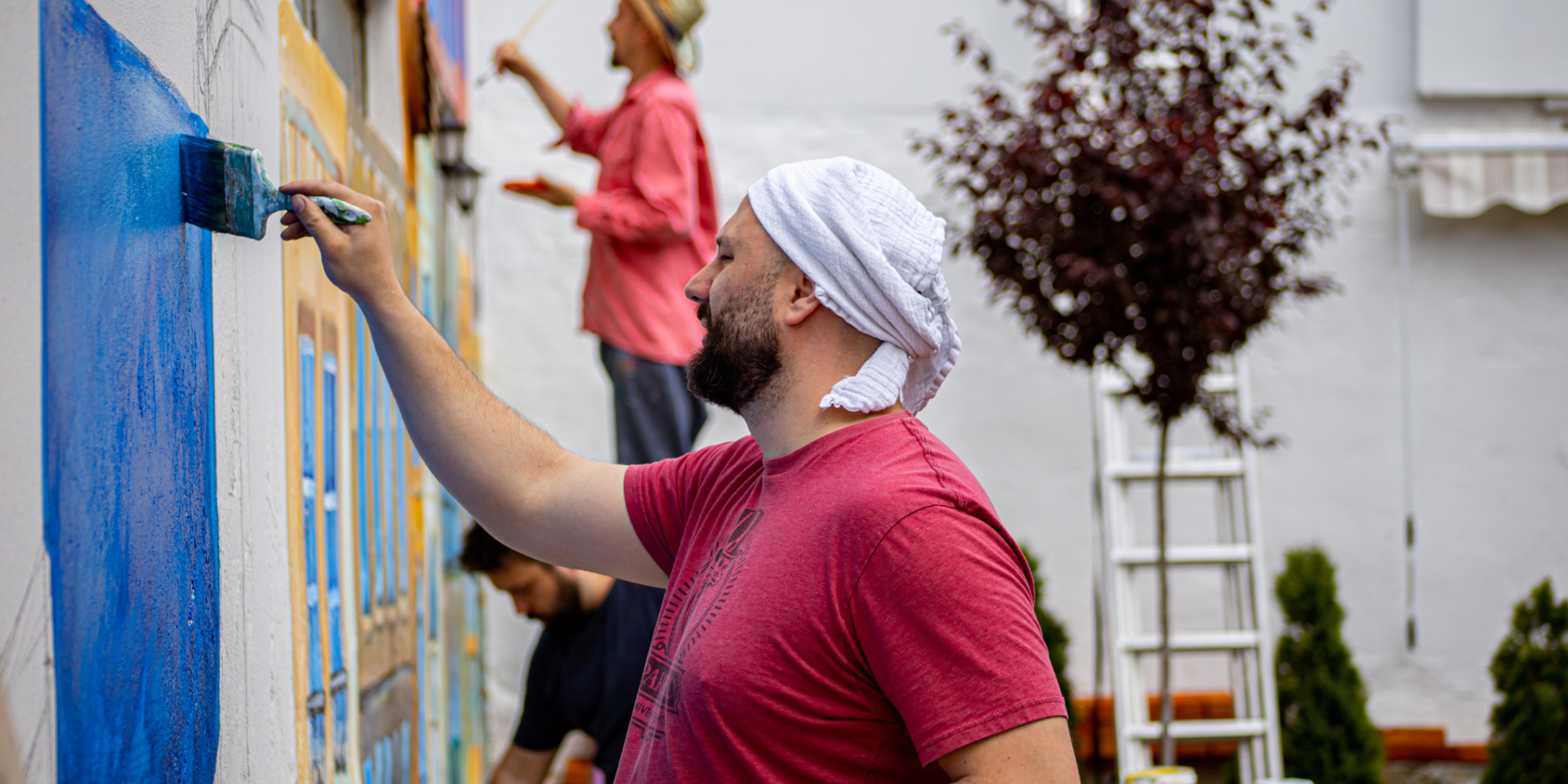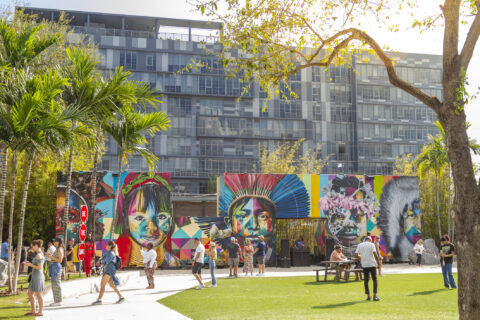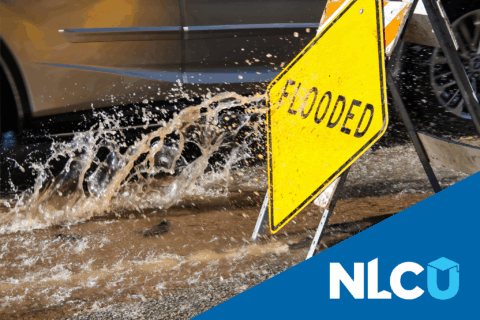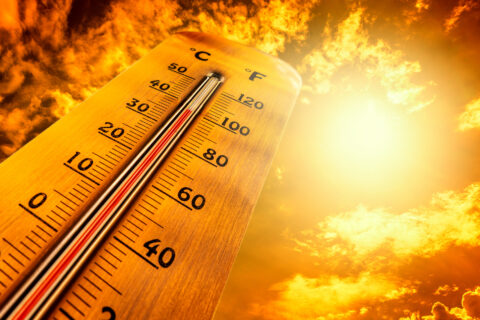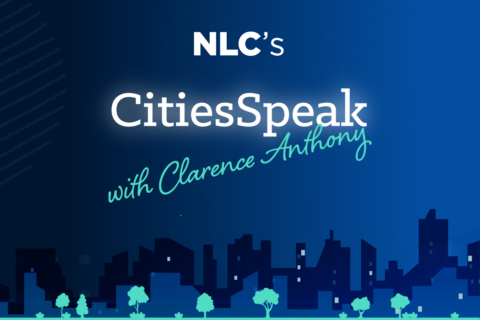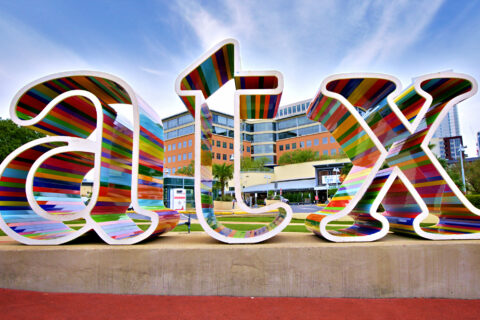Even as a growing majority of Americans say that they see the climate as a major concern, climate change can be a difficult topic to engage people in. Both the scale of the crisis and the abstract way in which it is often discussed contribute to this challenge. In order to engage communities in resilience planning, cities must think creatively about how to make resiliency concepts more tangible. That’s where artists can lend a hand. The arts have a unique ability to effectively communicate big ideas, engage communities, and imagine better worlds. Some cities are working in partnership with artists to ignite conversations about climate change and build community resilience measures that are both effective and joyful.
Creative Knowledge Sharing
“A picture is worth a thousand words” rings true when it comes to climate communication. The arts help ideas resonate with people where sharing data trends and statistics often fall short. Public art installations are an opportunity to engage a wide audience in the topic of resilience and reach them in the way only the arts can. In cities around the country, artists are using their mediums to demonstrate how neighborhoods can change as the climate does.
- Visual arts. In Miami-Dade County, Miami Murals pairs art and technology to spread awareness about the impacts of climate change, particularly sea level rise and increased flooding in neighborhoods. Visitors can view a mural with an augmented reality app on their phone and see how rising sea levels will transform elements in the mural. The purpose of the project is to translate abstract information about sea level rise into tangible imagery that makes the climate crisis feel closer to home. Before It’s Too Late, the group behind the murals, has installed murals in elementary schools, parks, an EV parking lot, and other key locations to spark conversation. Funding comes from community redevelopment agencies, city commissioners’ budgets, PTAs, private institutions, and individual donors.
- Performing arts. Cities have an opportunity to support local artists and foster climate engagement by partnering with organizations that use music, storytelling, and other performing arts to engage communities in climate action. ClimateMusic is one such organization. Based in San Francisco, it brings together climate scientists and musicians to create songs that build awareness about climate change and inspire listeners to action. The group partners with local climate organizations for their events so that as people are moved to want to take action, they are connected to a local group they can volunteer with. In Gary, Indiana, writer and historian Jeff Biggers worked with local musicians, poets, and performers to imagine what a regenerative “Gary Ecopolis” could look like. Biggers’ Climate Narrative Project works with communities across the country to imagine climate solutions that are locally grounded.
Art as a Tool for Resilience and Recovery
The effects of climate change are becoming visceral for communities everywhere: more frequent, extreme, and unpredictable weather events are affecting everything from housing security to disease proliferation. Reckoning with the sobering reality of climate change can easily bring people to a place of despair. Even to slow the effects of climate change, we will need to make changes to the ways we’ve been living. Change can be scary, but artists are uniquely positioned to think creatively, envision what a better future could look like, and remind people that their communities are full of hope, joy, and beauty.
- Water. In New Orleans, the Art Council used grant funding from the Department of Housing and Urban Development to host trainings for artists about water management infrastructure. Artists were then asked to create installations that spoke to the city’s historical relationship to water and what possible water futures could look like. In tandem, the City launched a youth development program, Youth Solutions, to pair young people with artist mentors to co-design interventions to improve water management and resilience in their neighborhoods. The program gives young people the opportunity to have a say in the investments made in their communities, engage in resiliency projects that will affect their neighborhoods, and ground these projects in New Orleans’ vibrant culture and history.
- Hurricanes and storms. In the aftermath of Hurricane Harvey, local arts service organizations, city officials, and philanthropists in Houston created the Harvey Arts Recovery Fund (HARF). The group distributed over $100,000 to local artists to help them rebuild and engage them in recovery efforts. The program brought musicians to shelters, helped victims of the storm rebuild their homes through fundraisers and volunteer labor, and created a hurricane recovery toolkit to guide the arts community through future storms. Subsequently, the Houston Arts Alliance launched its disaster resilience program to connect the arts community to emergency management services, which has since been able to rapidly respond to challenges brought by the COVID-19 pandemic, Houston’s 2021 arctic front, and other emergency events. Read more about Houston’s arts and resiliency work in Americans for the Arts’ climate-focused issue of Arts Link.
Another crucial area to engage artists in resilience is dealing with extreme heat. Extreme heat causes more fatalities than any other type of weather event in the US. Increasing canopy cover and repainting dark, paved surfaces are some ways of cooling city spaces while adding more interest and fun to public space. The Metropolitan Area Planning Council’s Cool it with Art Guide is an incredible resource on using the arts to combat the effects of extreme heat – and how to fund it.
- Extreme heat. The Phoenix Office of Arts and Culture’s Public Art Program recruits artists to participate in capital projects to bring greater life into these projects and showcase local artistic styles. The program pays particular attention to infrastructure projects that benefit historically disinvested communities. For instance, the Public Art Program works with artists to design and build perforated screens for transit shelters to protect transit users from the heat. Low-income people and people of color are more likely to use public transit and to live in neighborhoods with the highest urban heat effect.
By engaging artists in resilience planning, cities can invest in sustaining their local arts community while simultaneously engaging communities, bolstering community revitalization and meeting climate goals. For more information on how cities can use ARPA funds for the arts and resilience, check out NLC’s ARPA Fact Sheet: Leveraging the Arts.
Share Your Efforts
Is your community using the arts to share information, build resilience, and start conversations about climate change? Let us know!
Reach out to mehrotra@nlc.org.
